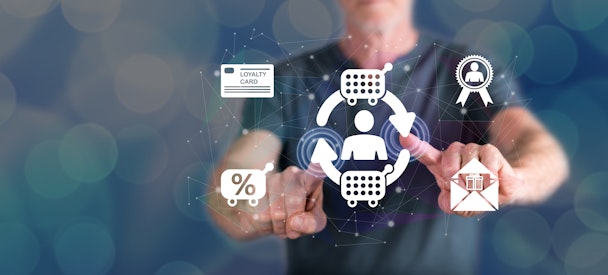Personalization, customer centricity & brand value help marketers stay ahead of the curve
Customers have changed but how have brands responded? Experts from Sentosa Development Corporation, Razer and Grab for Business highlight the importance of brand loyalty in times of crisis at The Drum’s APAC Trends Briefing.

‘Loyalty programs can still be effective if approached strategically’ / Adobe Stock
The Covid-19 pandemic has undoubtedly impacted customer behaviors and brands have had to adapt quickly to these changes, developing new tools and strategies to meet the evolving needs of their customers.
In a session hosted by Eugene Yap, head of strategy consulting at Epsilon APAC, at The Drum’s APAC Trends Briefing, experts discussed how these uncertain times have turned the focus to retention, highlighting the importance of building brand loyalty. Watch the full session here.
The pandemic has affected brands differently depending on their industry and business model. Sentosa Development Corporation lost a majority of tourists, forcing it to pivot its business model and focus on a loyalty program to engage and retain local customers. On the other hand, Grab For Business saw a surge in demand for digital vouchers as companies shifted towards digital solutions to engage with customers.
The importance of personalized communication and value creation through loyalty programs became integral in times of crisis. “The need for brands to have an online presence and segment their customers into different groups to provide personalized communication became crucial,” says Emily Ong, head of loyalty at Razer. “Loyalty strategies must be tailored to each segment to retain customers and create value for them across different channels.
“It’s important to note that loyalty programs go beyond just rewards and points, and the strategies used to retain customers are crucial. While traditional levers such as promo codes still work, applying gamification techniques and creating value for customers to encourage desired behaviors is important. We also focused on personalized experiences and used data collected through loyalty programs to tailor experiences to each customer.”
Nix Tang, assistant director of loyalty and channel marketing at Sentosa Development Corporation believes that loyalty programs can still be effective if approached strategically and talked about how Sentosa changed its loyalty program to provide more rewards and value to their members rather than utility cart.
She speaks to the opportunities with technology in aiding the process of customer loyalty as it provides brands with opportunities to engage with customers in new and exciting ways. “For instance, new technologies such as web3 have expanded the pool of customers that brands can acquire, and AI is improving how brands capture and analyze customer data, which helps them personalize their communication and build stronger relationships with their customers,” says Tang.
According to Epsilon’s research, there was a 6% decline in incentivized loyalty programs in the past few years. “As per the Epsilon’s loyalty index, we studied what truly predicts purchase behavior of customers over a long period. There is a proven relationship between loyalty drivers, attitudes, and actual consumer behavior,” explains Yap.
Epsilon breaks consumer behavior into three categories:
-
Loyalty drivers: value-add offers; participation; recognition; education; access; incentives; personalization; entertainment; promo; place; price; product and service
-
Attitudinal loyalty: share of heart, share of mind and share of value
-
Sales and behavioral loyalty: share of category, share of wallet and share of time
The speakers emphasized personalization, customer centricity and staying true to brand values while being agile as essential elements that can help marketers navigate through economic headwinds.
“While there has been a slight decrease in the effectiveness of traditional loyalty programs, they still work to incentivize customers in the short term,” says Stephanie Chia, regional head, GTM and commercial at Grab For Business. “However, to build sustainable long-term loyalty, companies need to go beyond promo codes and use gamification techniques to encourage desired behaviors and provide value to customers through exclusive services and experiences. Marketers also need to strike a balance between short-term sales performance and long-term customer value.”
Content created with:

Epsilon
Epsilon is a global advertising and marketing technology company positioned at the center of Publicis Groupe. We connect advertisers with consumers to drive performance...
Find out more
